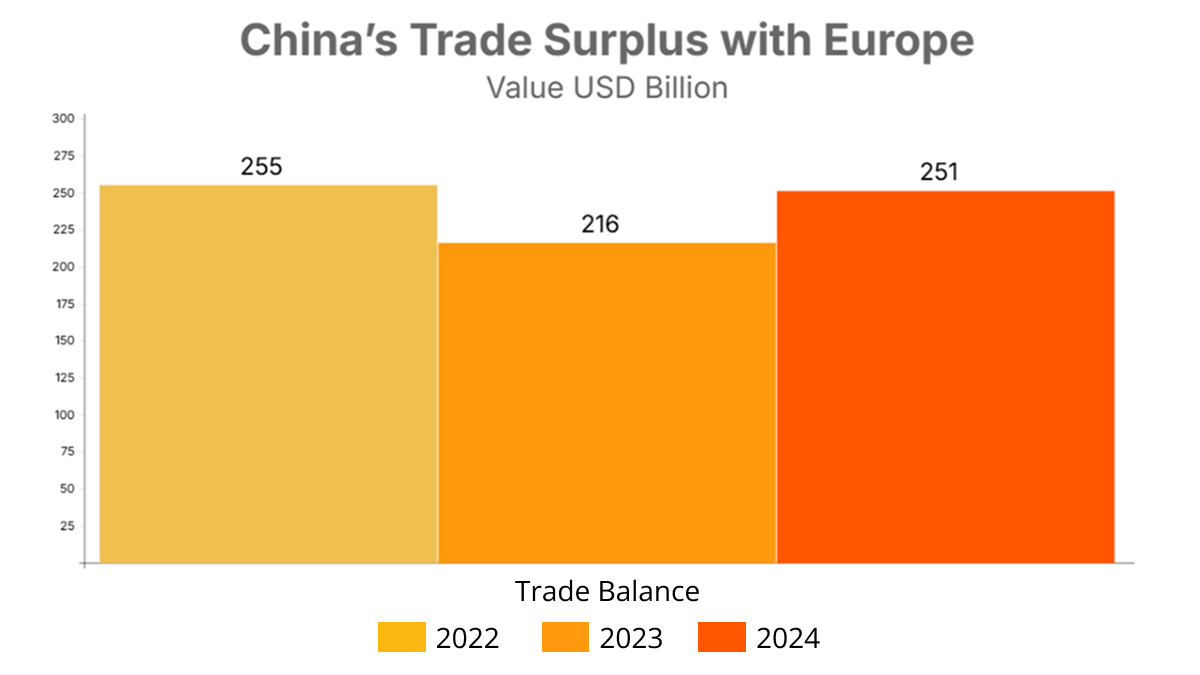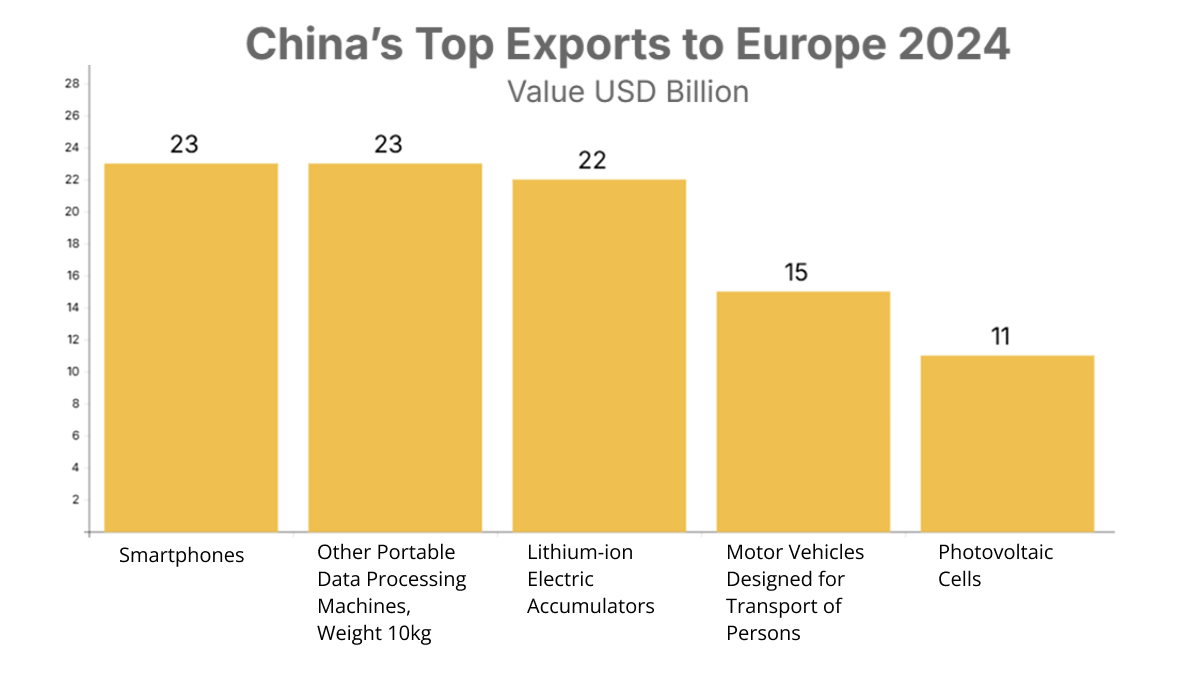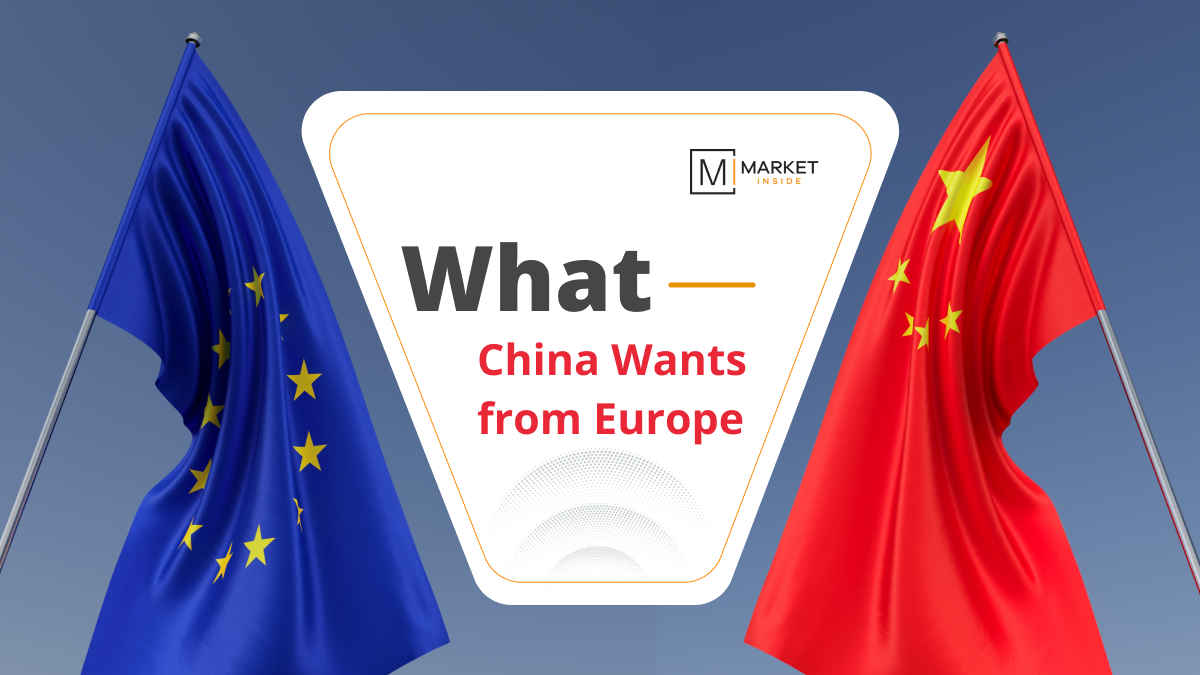As tensions rise between global powers, China is quietly but assertively expanding its reach across Europe. From strategic investments in ports and energy infrastructure to aggressive moves in electric vehicles and green technology, Beijing sees the European Union not just as a vital export market, but as a key arena in its broader quest for global influence. Beyond trade, China seeks access to advanced European technology, deeper political ties, and a less united Western front, especially as transatlantic relations shift. This Market Inside blog unpacks what China wants from Europe, how it’s working to get it, and why the EU is increasingly wary of the costs.
China’s Trade with Europe
As two of the world’s largest economies, China and the European Union share one of the most consequential trading relationships of the 21st century. This partnership, rich in opportunity and fraught with geopolitical tension, has become a central pillar of global trade, supply chains, and diplomacy.

| Year | Trade Balance |
| 2022 | 255 |
| 2023 | 216 |
| 2024 | 251 |
****Value USD Billion
What China Exports to Europe
As the world’s largest exporter, China is a dominant supplier of goods to the European Union. From smartphones and solar panels to electric vehicles and machinery, Chinese exports are deeply embedded in Europe’s supply chains—and increasingly at the center of political and economic friction.

| Product | Value USD Billion |
| Smartphones | 23 |
| Other Portable Data Processing Machines, Weight 10kg | 23 |
| Lithium-ion Electric Accumulators | 22 |
| Motor Vehicles Designed for Transport of Persons | 15 |
| Photovoltaic Cells | 11 |
What China Wants from Europe
- Market Access & Economic Leverage
China sees Europe as one of its most valuable export markets—especially for high-end goods like electric vehicles, batteries, solar panels, and other advanced manufactured products. European markets provide demand and legitimacy for China’s industrial upgrade ambitions under programs like Made in China 2025 and its transition toward high-value exports.
Beijing also leverages investment and supply chain integration to entrench its influence. Strategic firms like Cosco have acquired stakes in European ports—e.g., Valencia, Barcelona, Piraeus—to strengthen its Belt and Road connectivity and control over trade infrastructure.
- Diplomacy & Political Influence
China aims to cultivate political relationships across EU member states—especially with Germany, France, and Central/Eastern Europe—to shape favorable positions in areas like human rights, Ukraine policy, South China Sea disputes, and recognition of Chinese territorial claims.
- Undermining Western Unity
A key strategic aim is to weaken cohesion between the EU and the U.S., and within the EU itself. By forging bilateral ties with select members, China hopes to foster fragmentation and reduce collective Western leverage—making the EU more pliable under multipolar pressures.
- Technology & Industrial Upgrading
China seeks access to European innovation—particularly in semiconductors, biotech, green tech, and aerospace—areas where it still relies on foreign leadership. Research imports, academic exchanges, and investment screening remain key domains of tension around tech cooperation.
- Global Governance & Legitimacy
Asserting its influence internationally, China wants European endorsement—or at least tolerance—of its global initiatives: the Belt and Road, its Global Development Initiative, and broader multilateral norms. Cooperation from the EU enhances China’s global standing while validating its governance model.
Why It Matters & What Europe Brings to the Table
European Market Leverage: The EU remains indispensable for Chinese exporters—especially given Europe’s demand for clean energy technology and lack of tariff-free access elsewhere.
Counterweight to U.S. Influence: By wooing European partners, China seeks to dilute American leadership in global diplomacy and trade frameworks.
European Priorities and Realities: While the EU wants access to China’s market and tech exchange, it remains wary of unfair industrial policies, trade imbalances, strategic dependencies, and human rights concerns. Europe’s policy is increasingly defined by “de-risking”—not fully decoupling—from China.
Bottom Line
China views Europe as essential for three strategic fronts: market expansion, technological acquisition, and geopolitical realignment. Through investments, diplomacy, and infrastructure, Beijing aims to leverage Europe’s fragmented politics and vast single market to bolster its global position while weakening Western unity.




